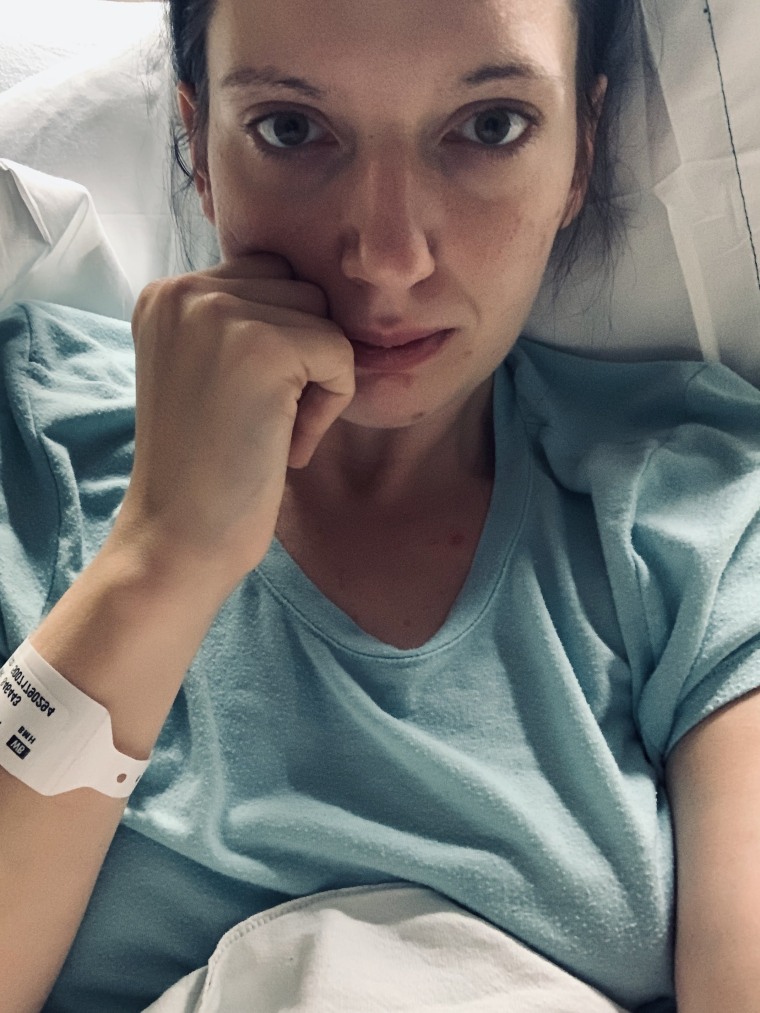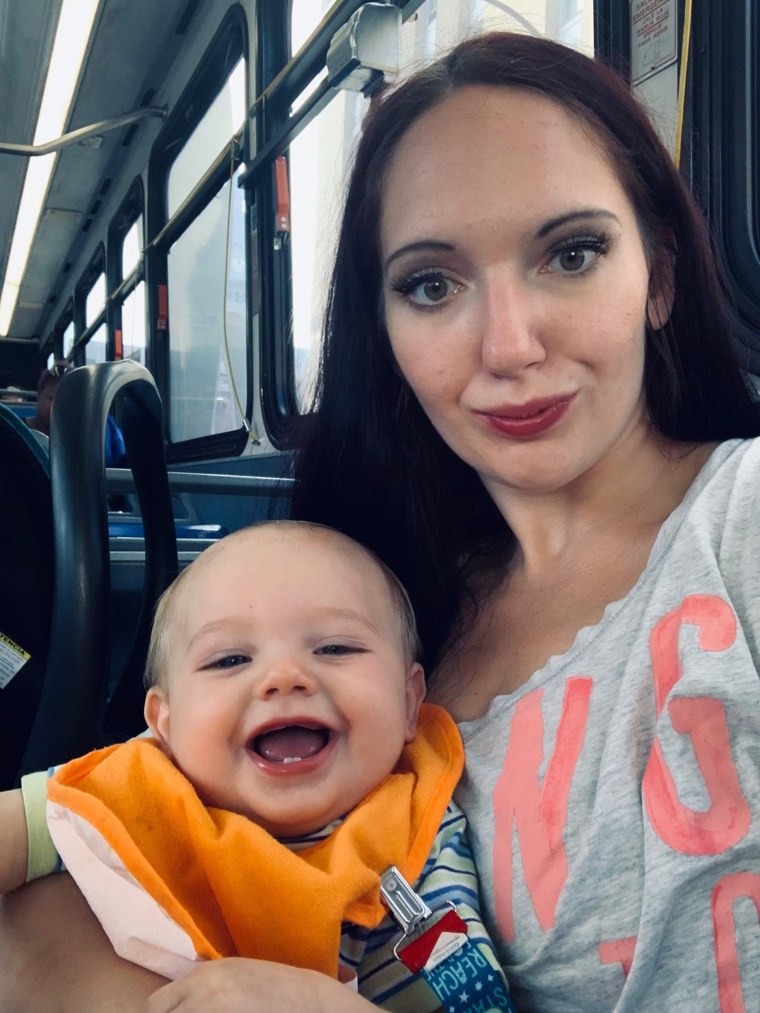Rebecca Reich still remembers the piercing headache that struck out of nowhere and made her feel like she was going to die.
An aneurysm had just burst in her brain causing life-threatening bleeding, but she wouldn’t know it for hours despite being rushed to urgent care. Doctors there looked her over and told her it was just a migraine, so she went home.
But that night, Reich came so close to death that a priest prayed by her side.

Looking back at the ordeal four months later, the 29-year-old single mother feels lucky to still be here for her young son.
“I'm just grateful to be alive because a lot of people in my situation don't make it out,” Reich, who lives in Buffalo, New York, told TODAY. “It was just a horrible scary experience that I wouldn't wish on anybody.
What happens when a brain aneurysm ruptures?
An aneurysm is a bulge or "ballooning" in the weak spot of an artery wall that — if it grows large — can burst.
About 6 million Americans are living with unruptured brain aneurysms, said Dr. David Altschul, a neurosurgeon at Montefiore Medical Center in New York. They’ll burst in only a fraction of those people — about 30,000 cases a year.
Brain aneurysms can happen at any age, but most develop after 40. Women are at greater risk for developing the condition than men. High-profile patients include "Game of Thrones" star Emilia Clarke and music mogul Dr. Dre.
Some people can inherit a tendency for weak blood vessels; others develop aneurysms as a result of wear and tear on the arteries, according to the Brain Aneurysm Foundation.
Reich had none of the other risk factors, which include smoking, high blood pressure and a family history of aneurysms. She'd also had no symptoms, which is typical with small unruptured aneurysms.
Strong emotions like anger can increase the chance for an aneurysm to burst and Reich — a manager at a retail store — did remember being angry at a rude coworker on Oct. 1, 2020, at around the time the horrible headache struck.
“It was like the worst pain I've ever felt in my life,” she recalled. “All of a sudden, it just felt like something had stabbed me in the top of my head, just a sharp piercing pain.”
Reich also felt a throbbing, dull pain in the back of her neck. She thought she screamed but no sound came out and part of her body felt numb.
Can you survive a ruptured brain aneurysm?
Concerned coworkers took her to urgent care, where doctors told her she was just having a horrible migraine and sent her home, Reich said. She believed them even though she'd had migraines before and this felt different: "It felt like this feeling of dread that I was going to die."
She took a nap, but woke up an hour later with another sharp piercing pain. That’s when Reich’s father called 911 and an ambulance rushed her to the hospital.
An MRI revealed Reich had a subarachnoid brain hemorrhage — bleeding in the space that surrounds the brain. She’d been walking around with the hemorrhaging for eight hours.
As dire as the situation was, Reich still beat the odds: Ruptured brain aneurysms are fatal in about 50% of cases and of those people who survive, about 66% suffer some permanent neurological deficit, according to the Brain Aneurysm Foundation.
The bleeding had to be stopped immediately with a procedure, so as a priest prayed by her side, she said goodbye to her 2-year-old son just in case.

Doctors then threaded a catheter through her body to the site of the brain aneurysm and released tiny coils, which blocked the aneurysm, reduced the blood flow into it and induced clotting.
When Reich woke up, doctors asked if she knew her name and who the president was. She did.
“I am just shocked that I came out of it because I didn't think I would,” she said.
Reich couldn’t work for about two months during her recovery and was grateful people contributed to a crowdfunding page that helped her pay rent and other expenses. Today, she’s back at work but said she has issues with her short-term memory and has had to relearn much of her job.
Doctors have told her to take it easy and expect to be monitored for the rest of her life to make sure there’s no more bleeding in her brain.
“I still feel the effects every day of what happened. I go to bed scared that I'm not going to wake up the next day and I wake up scared that I'm not going to be able to make it to the night so my anxiety is very severe,” Reich said.
“(But) I'm lucky to be alive.”



